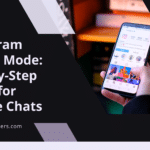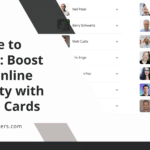
|
Getting your Trinity Audio player ready...
|
Engaging content refers to any type of content that captures and holds the attention of its audience. It is content that is interesting, informative, and entertaining, and it encourages the audience to take action. Engaging content is crucial for businesses because it helps to build brand awareness, establish credibility, and drive customer engagement and conversions.
There are several elements that make content engaging. First and foremost, it needs to be relevant to the target audience. It should address their needs, interests, and pain points. Engaging content also needs to be well-written and well-structured. It should be easy to read and understand, with a clear message and a compelling call-to-action. Additionally, engaging content often incorporates visuals, such as images, videos, or infographics, to make it more visually appealing and memorable.
Key Takeaways
- Engaging content is important for capturing and retaining audience attention.
- Understanding your audience is crucial for creating effective content.
- Crafting a compelling narrative and leveraging visuals can enhance the impact of your content.
- Writing with purpose and creating interactive content can further engage your audience.
- Incorporating emotion and optimizing for SEO are key strategies for successful content creation.
Understanding Your Audience: The Key to Creating Effective Content
To create engaging content, it is essential to understand your target audience. This involves identifying who your audience is, conducting thorough audience research, and creating buyer personas.
Identifying your target audience means determining who your ideal customers are. This includes demographic information such as age, gender, location, and income level, as well as psychographic information such as interests, values, and behaviors. By understanding who your audience is, you can tailor your content to their specific needs and preferences.
Conducting audience research involves gathering data about your target audience through various methods such as surveys, interviews, and social media listening. This research can provide valuable insights into your audience’s preferences, pain points, and motivations. It can help you understand what type of content they are looking for and what will resonate with them.
Creating buyer personas is a way to bring your target audience to life. A buyer persona is a fictional representation of your ideal customer based on research and data. It includes details such as their background, goals, challenges, and preferences. By creating buyer personas, you can better understand your audience’s needs and create content that speaks directly to them.
Crafting a Compelling Narrative: Techniques for Storytelling in Content
Storytelling is a powerful technique for creating engaging content. It helps to capture the attention of the audience, evoke emotions, and make the content more memorable. There are several elements that make up a compelling narrative.
Firstly, a compelling narrative needs to have a clear structure. It should have a beginning, middle, and end, with a clear progression of events. This helps to keep the audience engaged and interested in the story.
Secondly, a compelling narrative needs to have relatable characters. These characters can be real people or fictional personas, but they should be relatable to the audience in some way. This helps the audience to connect with the story and become emotionally invested in it.
Thirdly, a compelling narrative needs to have conflict and resolution. Conflict creates tension and keeps the audience engaged, while resolution provides closure and satisfaction. This can be achieved through storytelling techniques such as introducing obstacles or challenges that the characters need to overcome.
Leveraging Visuals: Creating Eye-catching Graphics and Videos
| Metrics | Description |
|---|---|
| Engagement rate | The percentage of people who interact with your visuals by liking, commenting, or sharing. |
| Click-through rate | The percentage of people who click on a link in your visual to visit your website or landing page. |
| Conversion rate | The percentage of people who take a desired action after viewing your visual, such as making a purchase or filling out a form. |
| Brand awareness | The level of recognition and familiarity that people have with your brand as a result of your visuals. |
| Retention rate | The percentage of people who remember your brand or message after viewing your visual. |
Visuals are an important component of engaging content. They help to capture the attention of the audience and make the content more visually appealing and memorable. There are several types of visuals that can be used in content.
Images are one of the most common types of visuals used in content. They can be photographs, illustrations, or graphics that help to convey information or evoke emotions. Images can be used to break up text, highlight key points, or add visual interest to the content.
Videos are another powerful visual tool for engaging content. They can be used to tell stories, demonstrate products or services, or provide tutorials or how-to guides. Videos are highly engaging because they combine visuals, audio, and motion, which can capture the attention of the audience and hold it for longer periods of time.
Infographics are a visual representation of information or data. They are a great way to present complex information in a visually appealing and easy-to-understand format. Infographics can be used to explain concepts, present statistics, or compare different options or choices.
When creating visuals for content, it is important to keep a few tips in mind. Firstly, visuals should be relevant to the content and support the message you are trying to convey. They should also be high-quality and visually appealing. Additionally, it is important to optimize visuals for different platforms and devices to ensure they are displayed correctly and load quickly.
Writing with Purpose: Tips for Crafting Clear and Concise Copy
Clear and concise copy is essential for engaging content. It helps to communicate your message effectively and keeps the audience interested and engaged. There are several tips for crafting clear and concise copy.
Firstly, it is important to have a clear objective or purpose for your content. What do you want to achieve with your content? What action do you want the audience to take? Having a clear objective will help you stay focused and ensure that your copy is concise and to the point.
Secondly, it is important to know your audience and tailor your copy to their needs and preferences. Use language that they can understand and relate to, and address their pain points or challenges. This will help you connect with your audience on a deeper level and make your copy more engaging.
Thirdly, it is important to use simple and straightforward language. Avoid jargon or technical terms that may confuse or alienate your audience. Instead, use plain language that is easy to understand. This will make your copy more accessible and engaging.
Creating Interactive Content: Engaging Your Audience in New Ways
Audience
Interactive content is a type of engaging content that encourages the audience to actively participate and engage with the content. It goes beyond passive consumption and encourages the audience to take action or make choices. There are several types of interactive content that can be used to engage your audience.
Quizzes and surveys are a popular form of interactive content. They allow the audience to answer questions and receive personalized results or recommendations based on their answers. Quizzes and surveys can be used to gather data about your audience, as well as provide valuable insights or information.
Polls and voting are another form of interactive content. They allow the audience to express their opinions or preferences on a particular topic or question. Polls and voting can be used to gather feedback, generate discussion, or make decisions based on the audience’s input.
Interactive infographics are a visual representation of information or data that allows the audience to explore and interact with the content. They can include clickable elements, animations, or interactive features that provide additional information or context.
Interactive content has several benefits. Firstly, it increases engagement and interaction with the audience. By actively participating in the content, the audience is more likely to remember and retain the information. Secondly, interactive content provides a more personalized experience for the audience. By allowing them to make choices or receive personalized results, they feel more connected to the content and are more likely to take action.
Incorporating Emotion: The Power of Emotional Storytelling
Emotion is a powerful tool for engaging content. It helps to create a connection with the audience, evoke empathy, and make the content more memorable. There are several techniques for incorporating emotion in content.
One technique is to tell personal stories or anecdotes that evoke emotions such as joy, sadness, or nostalgia. Personal stories help to humanize your brand and make it relatable to the audience. They can also create a sense of empathy and emotional connection.
Another technique is to use visuals such as images or videos that evoke emotions. For example, using images of happy customers or videos of heartwarming moments can create a positive emotional response. Similarly, using images or videos that depict a problem or challenge can evoke empathy or concern.
Using language that evokes emotions is another effective technique. This can be done through the use of descriptive language, metaphors, or storytelling techniques. For example, using words such as “amazing,” “heartwarming,” or “inspiring” can create a positive emotional response. On the other hand, using words such as “frustrating,” “challenging,” or “heartbreaking” can evoke empathy or concern.
Optimizing for SEO: Strategies for Boosting Your Content’s Visibility
Search engine optimization (SEO) is important for engaging content because it helps to boost its visibility and reach a larger audience. There are several strategies for optimizing content for SEO.
Firstly, it is important to conduct keyword research and identify relevant keywords for your content. Keywords are the words or phrases that people use to search for information online. By including relevant keywords in your content, you can increase its visibility in search engine results.
Secondly, it is important to optimize your content’s meta tags. Meta tags are the HTML tags that provide information about your content to search engines. This includes the title tag, meta description, and header tags. By optimizing these tags with relevant keywords and compelling descriptions, you can improve your content’s visibility in search engine results.
Thirdly, it is important to create high-quality and valuable content. Search engines prioritize content that is informative, relevant, and well-written. By creating content that meets these criteria, you can improve its visibility in search engine results.
It is also important to optimize your content’s structure and formatting. This includes using headings and subheadings to organize your content, using bullet points or numbered lists to break up text, and using internal and external links to provide additional context or resources.
Measuring Success: Metrics for Tracking Engagement and Conversions
Measuring the success of your content is important because it helps you understand what is working and what is not, and make data-driven decisions to improve your content strategy. There are several metrics that can be tracked to measure engagement and conversions.
One metric is page views, which measures the number of times your content has been viewed. This metric provides an indication of how many people are accessing your content and can help you understand its reach and popularity.
Another metric is time on page, which measures how long people are spending on your content. This metric provides an indication of how engaging your content is and how well it holds the audience’s attention.
Bounce rate is another metric that measures the percentage of visitors who leave your website after viewing only one page. A high bounce rate can indicate that your content is not engaging or relevant to the audience.
Conversion rate is a metric that measures the percentage of visitors who take a desired action, such as making a purchase or signing up for a newsletter. This metric provides an indication of how effective your content is at driving conversions.
Staying Ahead of the Curve: Trends and Best Practices for Engaging Content
To create engaging content, it is important to stay up-to-date with industry trends and best practices. This helps you stay ahead of the curve and ensure that your content remains relevant and effective. There are several ways to stay up-to-date with industry trends.
One way is to follow industry blogs, websites, or social media accounts that provide updates on the latest trends and best practices. These sources often share case studies, research findings, or expert insights that can help you improve your content strategy.
Attending industry conferences or webinars is another way to stay up-to-date with industry trends. These events often feature presentations or panel discussions on the latest trends and best practices in content marketing. They also provide an opportunity to network with industry professionals and learn from their experiences.
Finally, it is important to continuously test and experiment with different types of content and strategies. This can help you identify what works best for your audience and refine your content strategy over time. By staying curious and open to new ideas, you can continue to create engaging content that resonates with your audience.
If you’re looking to enhance your content strategy, you may also be interested in exploring guest posting opportunities. Guest posting can help you reach a wider audience and establish your expertise in your industry. Media Officers has compiled a comprehensive list of 100 guest posting sites that you can consider for your content outreach efforts. Check out their article here to discover potential platforms where you can share your valuable insights and engage with new readers.
FAQs
What is Engaging Content Strategies?
Engaging Content Strategies refer to the techniques and methods used to create content that captures the attention of the target audience and encourages them to interact with the content.
Why is Engaging Content Strategies important?
Engaging Content Strategies are important because they help businesses to attract and retain customers, increase brand awareness, and improve their online presence.
What are some examples of Engaging Content Strategies?
Some examples of Engaging Content Strategies include creating interactive content such as quizzes and polls, using storytelling techniques, incorporating visual elements such as images and videos, and leveraging social media platforms to engage with the audience.
How can businesses implement Engaging Content Strategies?
Businesses can implement Engaging Content Strategies by conducting research on their target audience, identifying their interests and preferences, and creating content that aligns with those interests. They can also use analytics tools to track the performance of their content and make adjustments as needed.
What are the benefits of using Engaging Content Strategies?
The benefits of using Engaging Content Strategies include increased engagement with the target audience, improved brand awareness, higher conversion rates, and better search engine rankings.

























































